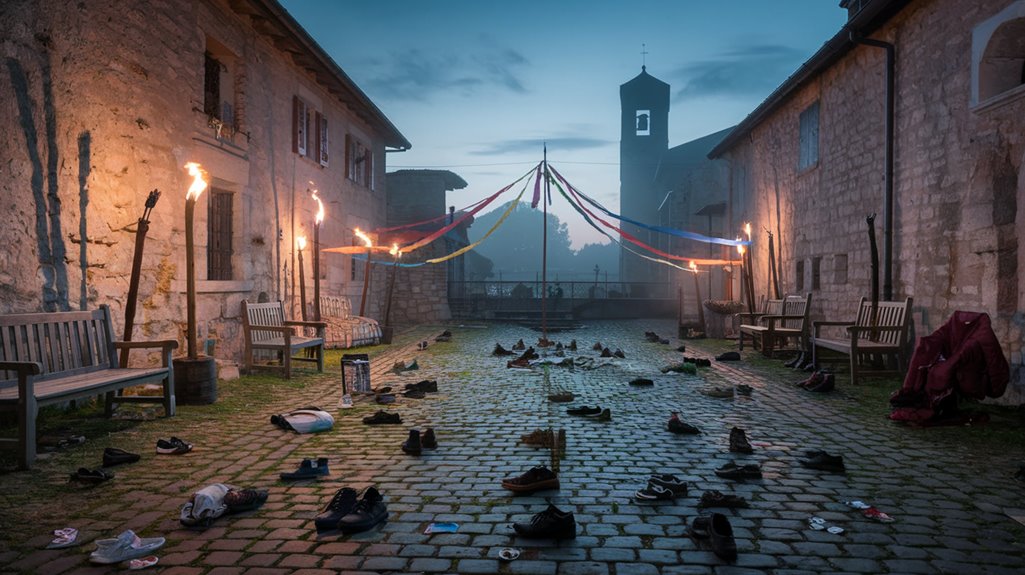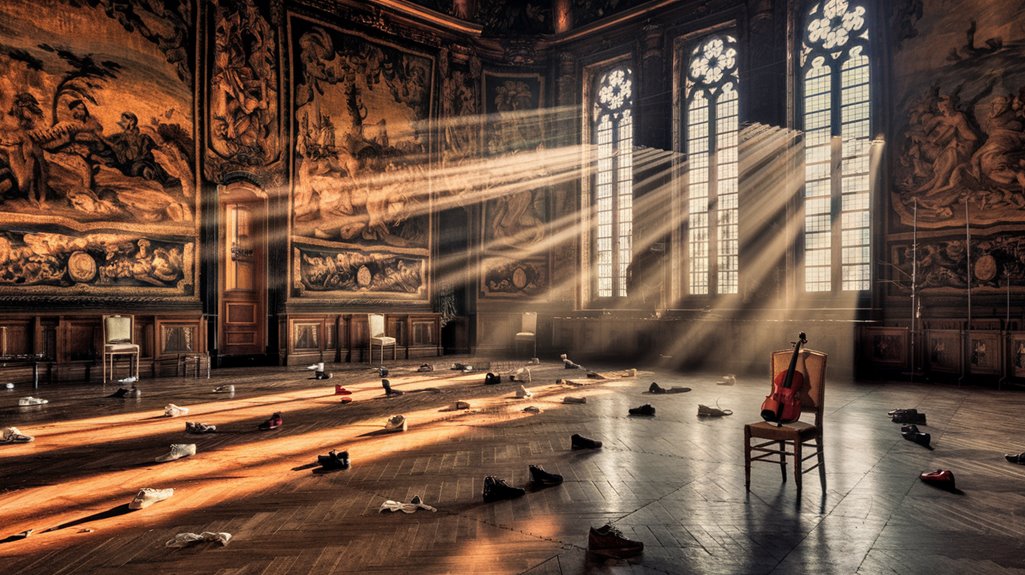When Dancing Became Deadly: Europe’s Forgotten Dance Mania
Imagine you're walking through the streets of 16th-century Strasbourg when you spot a woman dancing wildly in the summer heat. She's been at it for days, her feet bleeding, her face contorted in exhaustion. You'd likely assume she's lost her mind, but soon hundreds more join her in this deadly ballet. This wasn't an isolated incident – it's part of a bizarre phenomenon that swept through medieval Europe, challenging our understanding of mass behavior and human psychology.
The Strange Phenomenon That Gripped Medieval Europe

While medieval Europe faced numerous challenges like the Black Death and natural disasters, perhaps none were as bizarre as the dancing mania that swept through the continent between the 14th and 17th centuries.
In cities like Aachen and Strasbourg, you'd witness hundreds of people dancing uncontrollably for days or even weeks, often until they collapsed from exhaustion.
What began as isolated incidents quickly transformed into mass cultural expressions that defied explanation.
These weren't typical social rituals – participants would dance frantically, sometimes injuring themselves or dying in the process. One tragic example occurred when 200 dancers collapsed a bridge in Germany in 1278.
The phenomenon particularly gripped regions devastated by plagues and floods, suggesting a connection to widespread psychological stress.
While theories range from ergot poisoning to mass hysteria, no single explanation fully accounts for this mysterious chapter in European history. The impact of the Black Death was so severe that approximately 30 to 60 percent of Europe's population perished, likely contributing to this bizarre dancing phenomenon.
A Dance of Mass Hysteria: Symptoms and Spread
When historians examine dance mania's symptoms and spread, they're confronted with a terrifying pattern of mass hysteria that defied medical understanding.
You'd witness people caught in uncontrolled movement, dancing for days or weeks until they collapsed from exhaustion, their bodies wracked with convulsions and drenched in sweat. In one notable case, a woman named Frau Troffea sparked an outbreak in Strasbourg by dancing uncontrollably for six straight days.
What made this phenomenon particularly frightening was how quickly it spread, affecting thousands across Europe. Many experts now believe these outbreaks represented responses to collective trauma, especially following devastating events like the Black Plague. Musicians often accompanied the dancers but their presence tragically worsened the mania.
The most common symptoms included:
- Trance-like states where victims lost awareness of their surroundings
- Continuous, spasmatic dancing that couldn't be stopped voluntarily
- Physical injuries from exhaustion and repetitive movement
These outbreaks continued sporadically for centuries, baffling both medieval witnesses and modern researchers alike.
Notable Outbreaks That Changed History
Throughout medieval Europe, several devastating outbreaks of dance mania left an indelible mark on history, with two episodes standing out as particularly significant.
The 1374 Aachen outbreak, which began on June 24, swept across Germany and into Italy, affecting tens of thousands. Historical analysis suggests this event dramatically shifted public perception of mass hysteria. Similar to how modern academics engage in public intellectual discourse, medieval scholars debated intensely about the causes and implications of these outbreaks.
Just as impactful was the 1518 Strasbourg outbreak, starting with Frau Troffea and escalating to include 400 dancers, claiming up to 15 lives daily at its peak. The cultural significance of these incidents extended beyond their immediate impact, as they occurred during periods of economic hardship and social upheaval. Many victims reported seeing terrifying visions while dancing uncontrollably.
You'll find that other notable cases, like the 1278 River Meuse incident where 200 people danced until a bridge collapsed, further illustrate the phenomenon's devastating scope.
The Dark Side of the Dancing Plague
Behind the fascinating historical accounts of dancing plagues lay a horrific reality of human suffering and social collapse.
As you explore the dark consequences of these outbreaks, you'll discover how psychological trauma and cultural beliefs transformed communities into scenes of collective agony. Local authorities tried to cure the afflicted by sending them to St. Vitus shrine, believing divine intervention would end their torment. Many affected individuals experienced uncontrollable spasmatic movements that left them completely unable to rest.
The devastating impact manifested in several ways:
- Dancers suffered severe physical injuries, with many collapsing from exhaustion, heart attacks, and strokes.
- Bleeding feet and violent convulsions led to excruciating pain, while participants couldn't stop despite their bodies breaking down.
- Communities faced widespread death, with up to 400 people perishing in Strasbourg's 1518 outbreak alone.
You're witnessing a phenomenon where deeply-rooted fears, amplified by the Black Death's devastation, created a perfect storm of mass hysteria that literally danced people to their deaths.
Theories Behind the Mysterious Dancing Epidemic

What drove thousands of Europeans to dance uncontrollably until they collapsed? Several theories attempt to explain this bizarre phenomenon, with ergot poisoning being one of the most intriguing. The hallucinogenic properties of this grain fungus could have triggered erratic behavior, though it wouldn't explain how victims danced for such extended periods.
Psychological stress offers a more compelling explanation. You'll find that many outbreaks coincide with periods of extreme hardship, suggesting mass hysteria triggered by natural disasters, plagues, and famine. The decade leading up to the 1518 Strasbourg outbreak was marked by widespread sickness and soaring bread prices.
Cultural contagion likely played a significant role, as the dancing spread through social networks and shared beliefs about angry spirits.
While some researchers point to neurological disorders like Sydenham's chorea, no single theory fully explains this mysterious epidemic that gripped medieval Europe.
Lessons From History's Most Peculiar Social Contagion
This centuries-old dancing epidemic offers valuable insights into human behavior that remain relevant today.
When you examine the outbreak's pattern of social imitation and cultural stress, you'll find striking parallels to modern mass behaviors.
The lessons from this peculiar phenomenon reveal how collective behaviors can spread rapidly through communities, especially during times of societal pressure:
- People's susceptibility to mass movements increases during periods of severe cultural stress, as witnessed during the plague-ridden medieval era.
- Mirror neurons and social pressure can drive individuals to mimic behaviors they wouldn't typically exhibit.
- Modern mass reactions, like viral social media trends, share similar psychological mechanisms with historical dance mania.
Many participants experienced intense hallucinations and delusions during the outbreak, highlighting the severe psychological impact of mass hysteria.
Just as the outbreak began with Frau Troffea dancing uncontrollably, a single individual's actions can trigger widespread societal responses.











